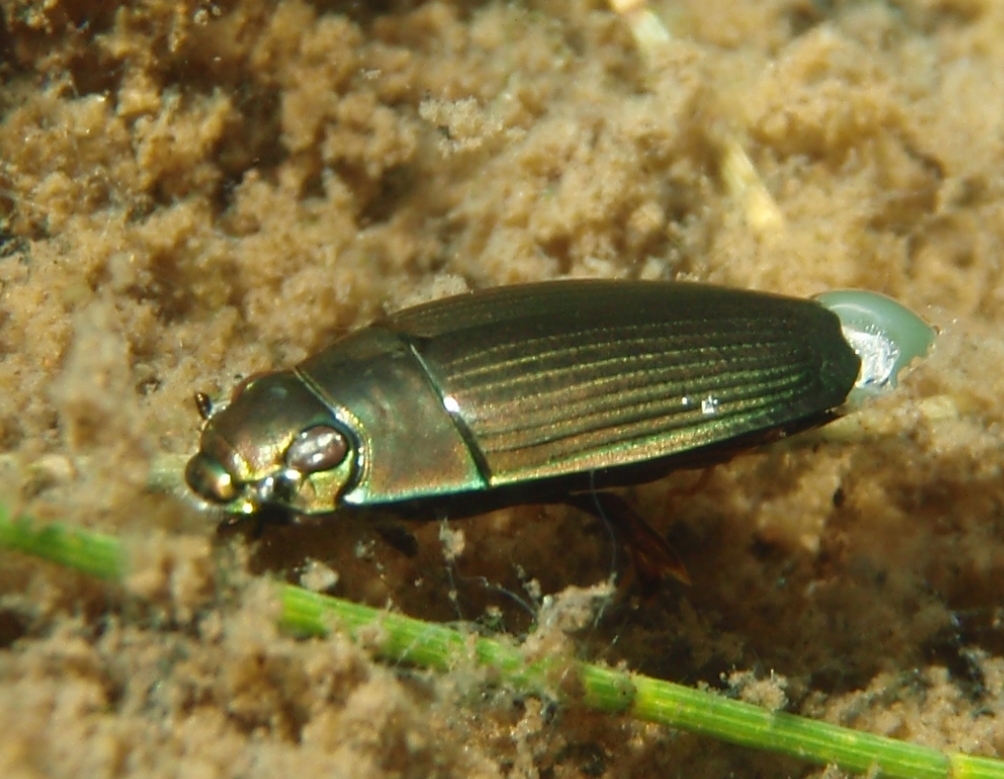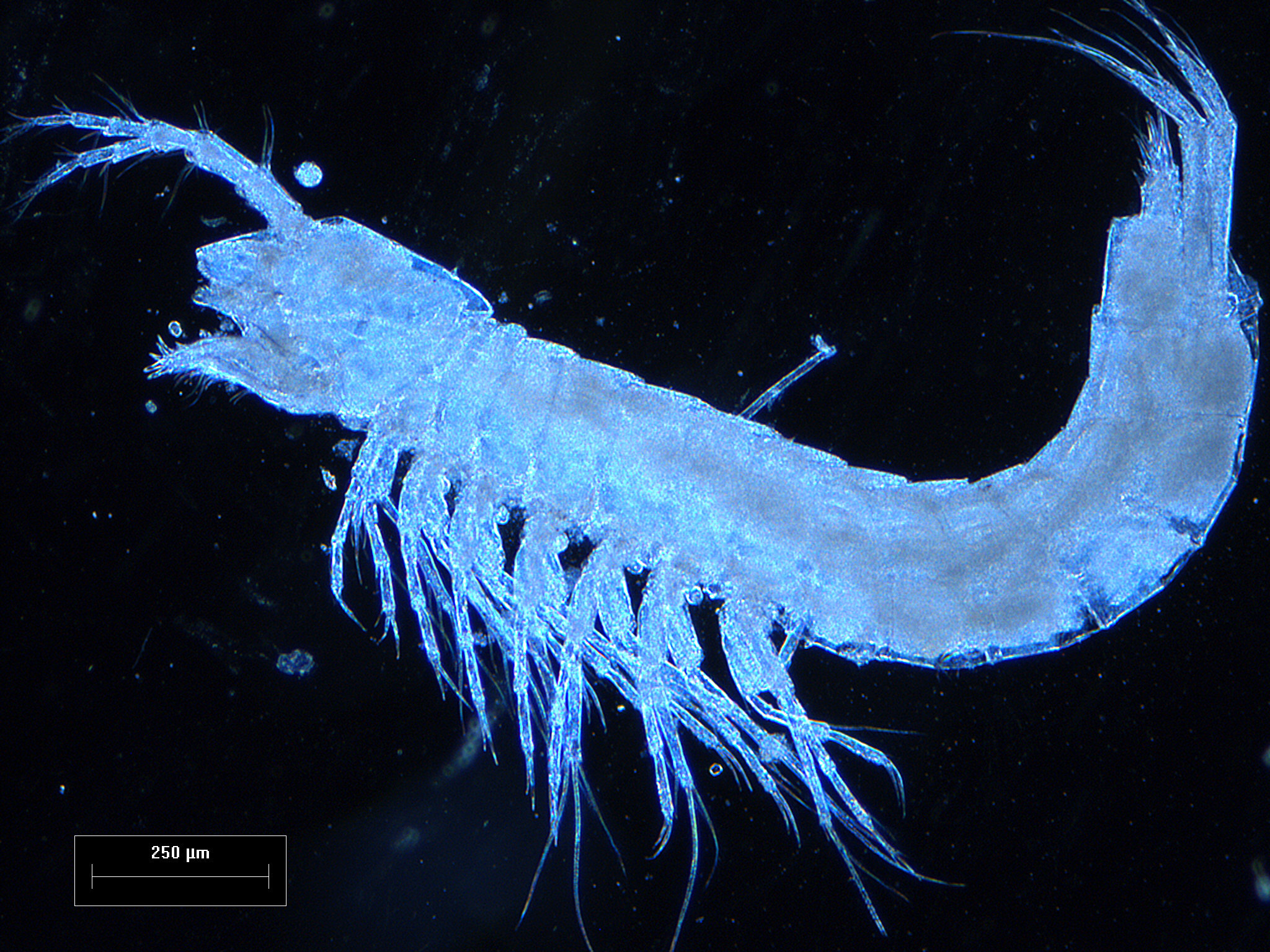Meet the Experts - Dr. Pete Hancock, ELA’s very own Aquaman
Monday, 6 December, 2021
Growing up in a vast array of places across regional Australia (Nyngan, Mudgee, Mareeba, Albury and others), Pete has been swimming in inland rivers and lakes since he was five.
Pete's love for Aussie interior waterways took hold and guided his career to freshwater ecology. His passion for swimming has seen him complete an indoor Iron Man raising money for Headspace and holding some impressive personal swimming goals – maintaining a streak of swimming every day for more than seven years (and counting).
Armed with a PhD from the University of New England, Pete's commitment to Australian freshwater ecology has led him to discover over 40 new species of groundwater invertebrates. Alongside his motivated team, Pete is making a difference by showing the value of Australia's unique waterways.
Pete checking for specimens caught in a fyke net.
1. How do you explain what you do for work at dinner parties?
I just say that I'm an aquatic ecologist, which means I study fish and other freshwater animals and try to help clients minimise their impact on rivers.
2. Why did you choose to work in the environmental space?
Ever since I was a kid, I've always loved being out in the bush swimming in rivers/lakes. I considered studying marine biology at university, but I followed my roots in freshwater ecology. It has taken me to some amazing locations.
3. How do you make a difference in your role with ELA?
I like motivating new staff and getting them excited about aquatic ecology, especially during field surveys.
4. To share your genius, what’s your one top tip for clients working on ecology projects?
Our inland rivers have undergone a lot of changes in the past 200+ years, and many are considered to be in poor ecological health. Where possible, it would be great to see developments that don't damage our waterways and the riparian vegetation that surrounds them. However, in the real world, humans are drawn to water, and many of our towns and cities occur on rivers so some impact is unavoidable. For projects with the potential to impact waterways, such as urban development, mining, and large infrastructure projects, it is important to work with someone who can advise on ways to minimise any impacts. Sometimes this may mean going beyond legislated requirements and taking a bit of extra care to ensure the best outcomes for aquatic ecology.
5. Biology, chemistry or physics and why?
Biology - because life is the most wonderful thing on Earth.

A Whirligig beetle (Gyrinidae Fotor)
6. Favourite movie or TV show and why?
Singing in the Rain, it's a great movie and lots of fun. I love musicals and enjoy Gene Kelly's dancing in the Moses Supposes scene.
7. Your kryptonite or worst habit?
Being distracted by all the fun things in life.
8. Favourite holiday destination and why?
Japan. Because the people are friendly, and the culture fascinating. There are also a lot of beautiful rivers, lakes, and seas to swim in, and onsen to soak in afterwards. I also really want to go and swim in Antarctica. But I feel like Japan would be easier to cross off the bucket list.
9. What’s the most interesting project you’ve ever worked on?
My job takes me to all sorts of locations, and you get to see how varied the biosphere is. I've done a lot of surveys for groundwater invertebrates, and it still amazes me that you can find small, blind shrimp-like crustaceans up to 40 m below ground. Life has a way of popping up in the most extreme environmental conditions. Most of the groundwater invertebrates I've collected over the past 20+ years have turned out to be new species, and we're still finding more. It's pretty exciting.

One of the blind shrimp-like crustaceans that can be found up to 40 m below ground.
10. Why is communication so important in the world of science and how do you try to be an approachable expert?
Our work as scientists involves lots of communication with our clients and industry partners. Our role as ecologists is to bring back our scientific findings from the field and communicate their value so that it makes sense to them. Conveying complex scientific information to people from diverse backgrounds, including farmers, government regulators, and the broader community, can be tricky. But that's where we can have the most significant impact.
Pete sampling a bore.
11. Tell us about your outdoor swimming obsession?
I learnt to swim in the Bogan River at Nyngan when I was about 4 or 5 and have been swimming ever since. In March 2014, I started swimming every day. I haven't missed a day since, so I am up to about 2800 days. It has been an awesome experience because it means I have to find a place to swim wherever I am and whatever the conditions. I've swum in just about all the different waterway types in Australia and New Zealand and in all kinds of weather. One year I swam in 333 different locations, including a 1.6 degree swim in the Fox Glacier River in New Zealand.
12. Do you have a favourite swimming location?
I really love the lakes and rivers of New Zealand. Lake Hauroko, which is NZ's deepest lake (463 m deep), would be one of my favourites. But I also can't go past our local swimming spot, Dumaresq Dam- especially when it's snowing. It's about 1 km to swim around and is surrounded by some spectacular native bushland.
Got a project that needs a specialised team of freshwater, groundwater, and estuarine ecology?
Contact:
Dr. Pete Hancock
Lead - Aquatic and Groundwater Ecology
(02) 8081 2682
